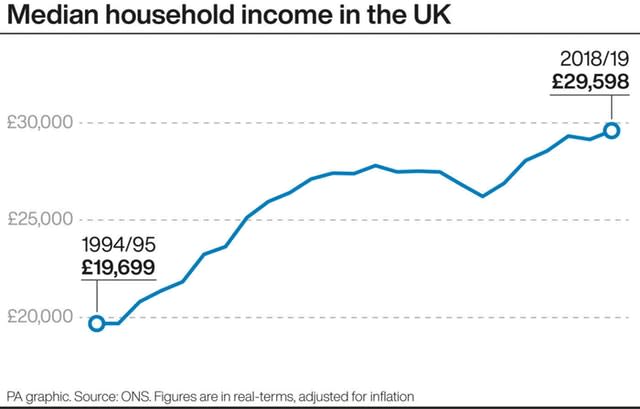Household income growth grinds to a halt
Growth in average household income in the UK has stalled, new figures show.
The amount of disposable income rose by 0.4% per year between 2016/17 and 2018/19, according to the Office for National Statistics (ONS).
This is down from a growth rate of 3.0% per year between 2012/13 and 2016/17.
The ONS found that median household disposable income in the UK in 2018/19 was £29,600 – up from £29,200 in 2017/18.

But the rise follows a slight fall in real-terms income between 2016/17 and 2017/18.
Income growth had “stalled” as a consequence of improving labour market conditions being “moderated” by an ongoing freeze on certain working-age benefits, the ONS said.
Both income support and child benefit had remained at their 2015/16 cash values, which had contributed to the average value of benefits received by non-retired households falling in real terms between 2017/18 and 2018/19.
The benefit freeze had also contributed in part to a drop in average income for the poorest fifth of people.
Median income for this group fell by 4.3% per year between 2017/18 and 2018/19, following average annual growth of 3.4% in the four years after 2012/13.
Cash benefits comprised a larger proportion of household income for the poorest fifth of people than for other groups.
At the top end of the scale, median income of the richest fifth fell by 0.4% a year over 2017/18 and 2018/19.
It means that despite average annual growth of 1.7% per year between 2012/13 and 2016/17, median income for the richest fifth of people was still below levels seen before the economic downturn.
The ONS has improved the way it calculates household income, to compensate for what it acknowledges was an under-reporting of the richest earners in previous surveys.
The new calculations incorporate information from HMRC, and has meant an increase in both the number and incomes of the very rich that are included in the figures.

 Yahoo Finance
Yahoo Finance 